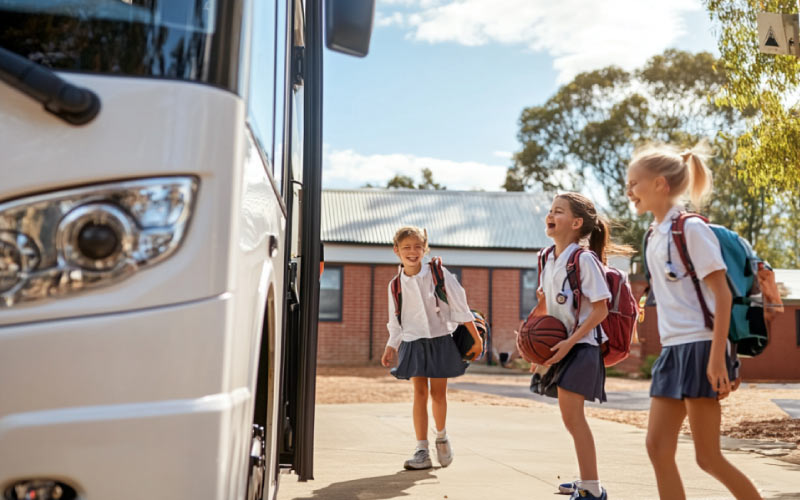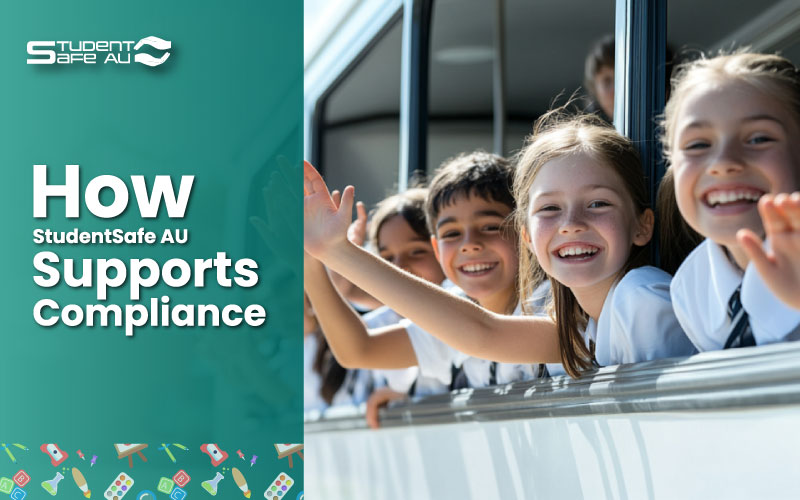StudentSafe AU supports student safety and transport compliance for independent Australian schools.
The safety of student transport has always been a critical concern for parents, educators, and policymakers. Recent legislative developments in Australia have introduced stringent measures to ensure the safety and security of students, particularly those attending independent schools. StudentSafe AU is at the forefront of supporting these legislative changes through innovative technology and systems. Here are six main talk points detailing these legislative developments and how StudentSafe AU is aiding student safety compliance and enhancing productivity.
1. Mandatory Safety Standards for Vehicles
Recent legislation mandates rigorous safety standards for all vehicles used in student transport. This includes installing advanced safety features such as seat belts, electronic stability control, and braking systems. These measures aim to significantly reduce the risk of accidents and ensure that students are transported in the safest possible conditions. StudentSafe AU supports schools by providing a comprehensive vehicle compliance tracking system. This system ensures that all vehicles in the fleet meet the required safety standards and are regularly inspected and maintained.
2. Enhanced Driver Training and Accreditation
The new legislation introduces stricter requirements for driver training and accreditation. Drivers must undergo extensive training programs covering safe driving practices, first aid, and emergency response procedures. Additionally, they must pass rigorous background checks and obtain specific accreditation to transport students. StudentSafe AU offers a driver management platform that tracks and verifies driver qualifications, training completion, and accreditation status. This ensures that only qualified and responsible individuals are entrusted with student transport.
3. Regular Vehicle Inspections and Maintenance
To further ensure safety, Australian law mandates regular vehicle inspections and maintenance. Transport operators must conduct thorough inspections at specified intervals and maintain detailed records of all maintenance activities. StudentSafe AU’s maintenance management system streamlines this process by scheduling inspections, tracking maintenance history, and alerting operators to upcoming service requirements. This proactive approach helps prevent vehicle malfunctions and ensures all vehicles are in optimal condition.

4. Real-Time Monitoring and Tracking Systems
The introduction of enhanced monitoring and tracking systems is another significant development in the legislation. Vehicles must now be equipped with GPS tracking devices, enabling real-time monitoring of their location and speed. This technology ensures adherence to safe driving practices and provides critical information in emergencies. StudentSafe AU’s real-time tracking system offers schools and parents a user-friendly platform to monitor transport vehicles. The system provides live updates on vehicle locations, speed, and route progress, enhancing transparency and safety.
5. Comprehensive Emergency Response Protocols
Recent legislative changes emphasise the importance of robust emergency response and communication protocols. Schools and transport providers must develop detailed emergency plans outlining steps for various scenarios such as accidents, breakdowns, or medical emergencies. These plans must be regularly reviewed and updated, with all staff trained on their implementation. StudentSafe AU’s emergency management system facilitates the development and execution of these protocols. The system includes real-time alerts, automated communication channels, and detailed emergency response plans, ensuring swift and effective action in any crisis.
6. Parental Engagement and Communication
An essential aspect of the new legislation is the need for effective communication with parents. Parents must promptly be informed about transport arrangements, safety measures, and incidents. StudentSafe AU offers a parent communication platform that updates parents through real-time notifications, trip updates, and incident reports. This system enhances transparency and ensures parents are always aware of their children’s transport status.
Conclusion
The recent legislative developments in Australia reflect a strong commitment to enhancing the safety of student transport, particularly for those attending independent schools. By implementing mandatory vehicle safety standards, ensuring rigorous driver training, mandating regular vehicle inspections, adopting advanced monitoring systems, establishing robust emergency response protocols, and enhancing parental communication, these laws aim to provide a safer transport environment for students.
StudentSafe AU is crucial in supporting schools in complying with these new regulations. Through innovative technology and comprehensive systems, StudentSafe AU ensures that schools meet legislative requirements efficiently and effectively. By partnering with StudentSafe AU through Bus Hire for Education, independent schools can enhance student transport services’ safety and security, providing parents peace of mind and a safer journey for students.
